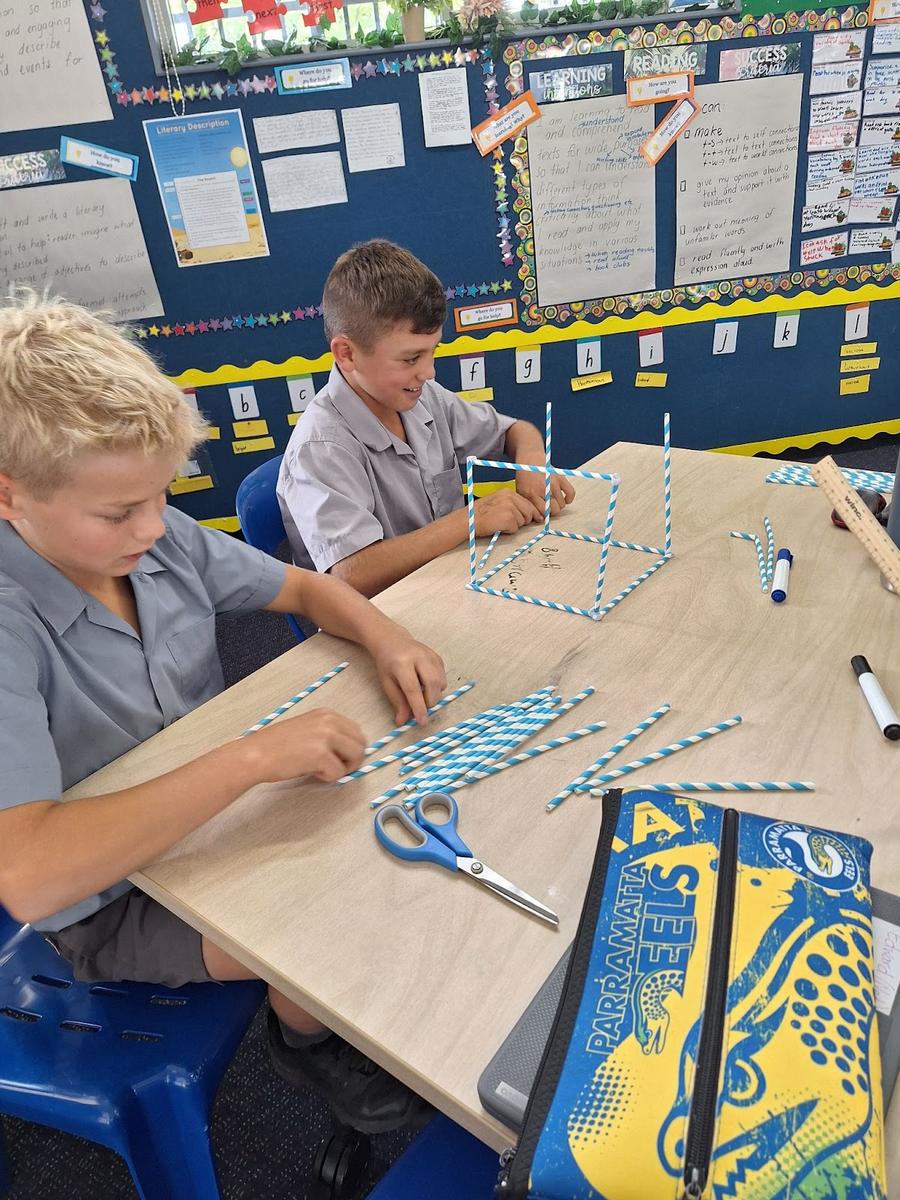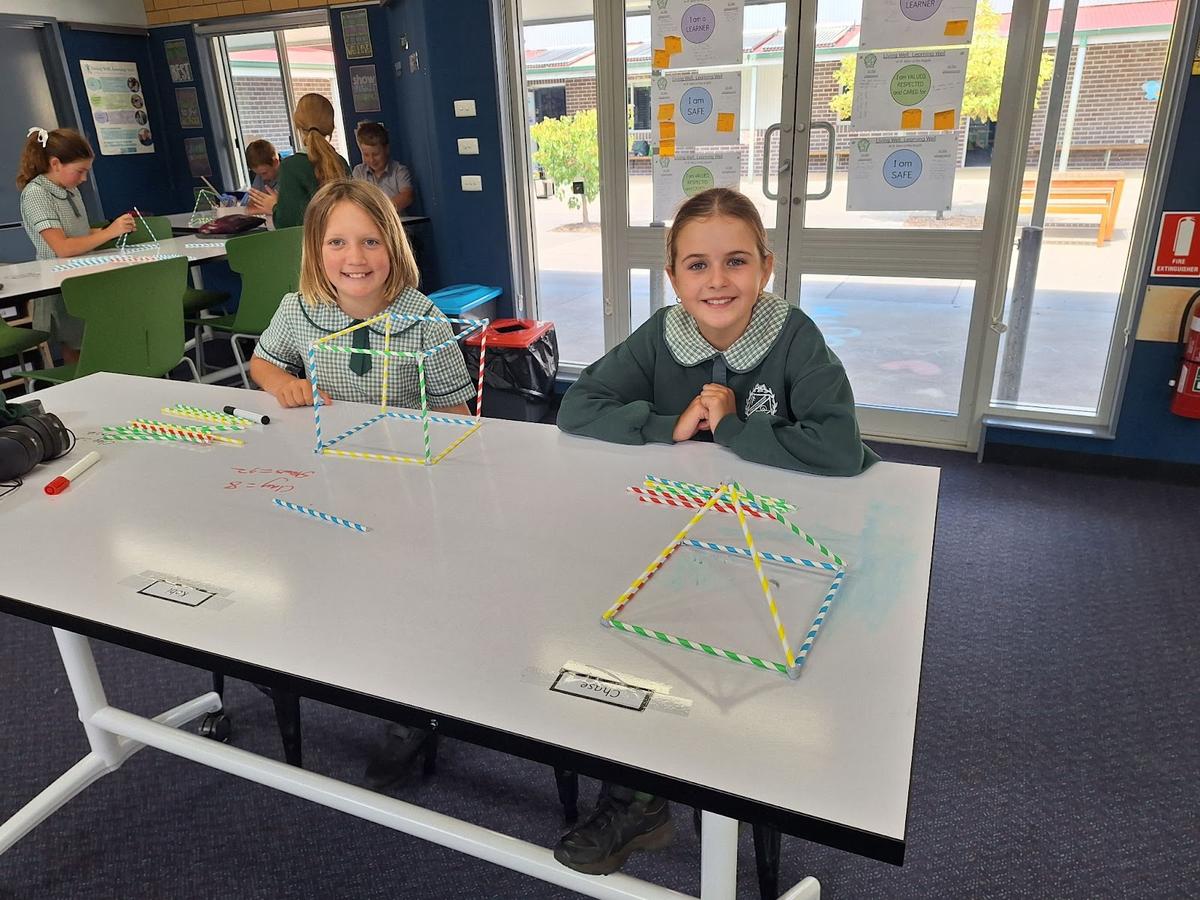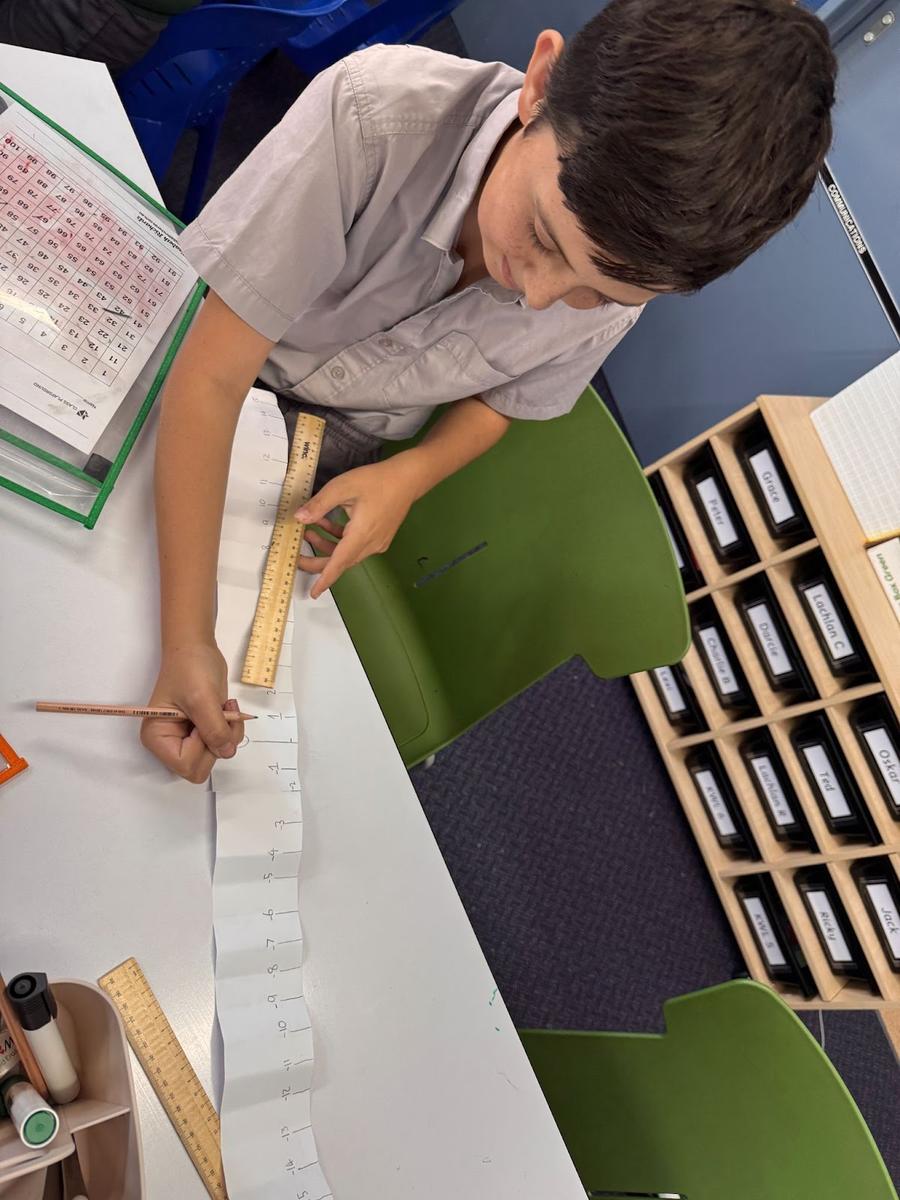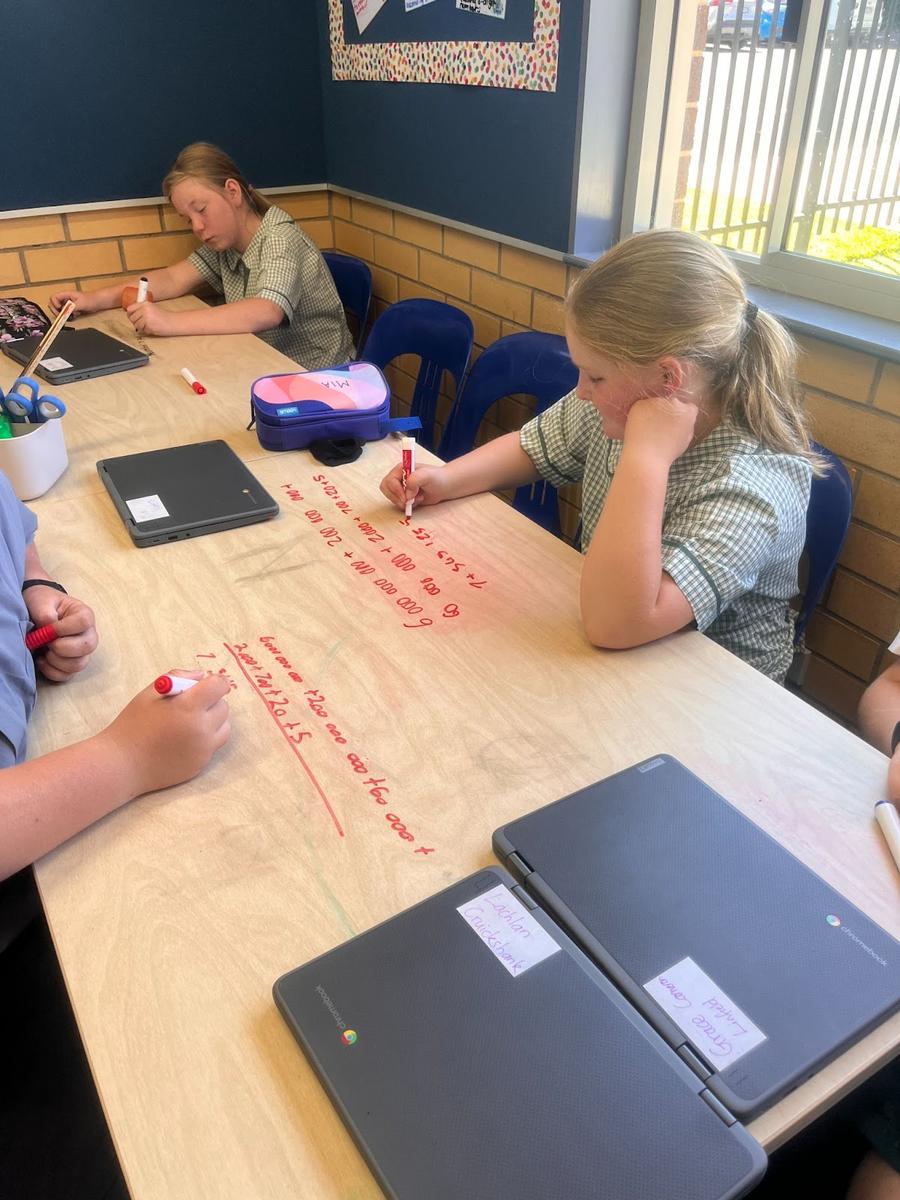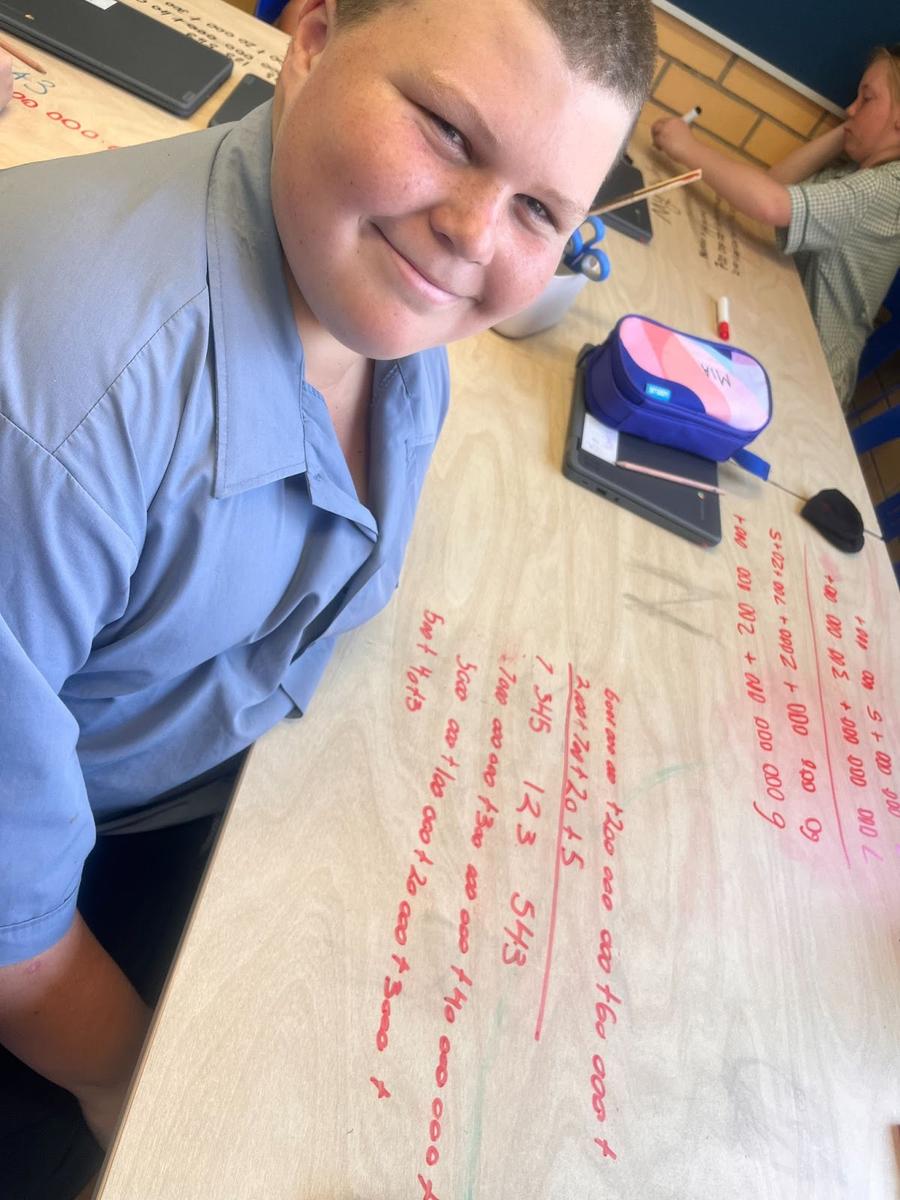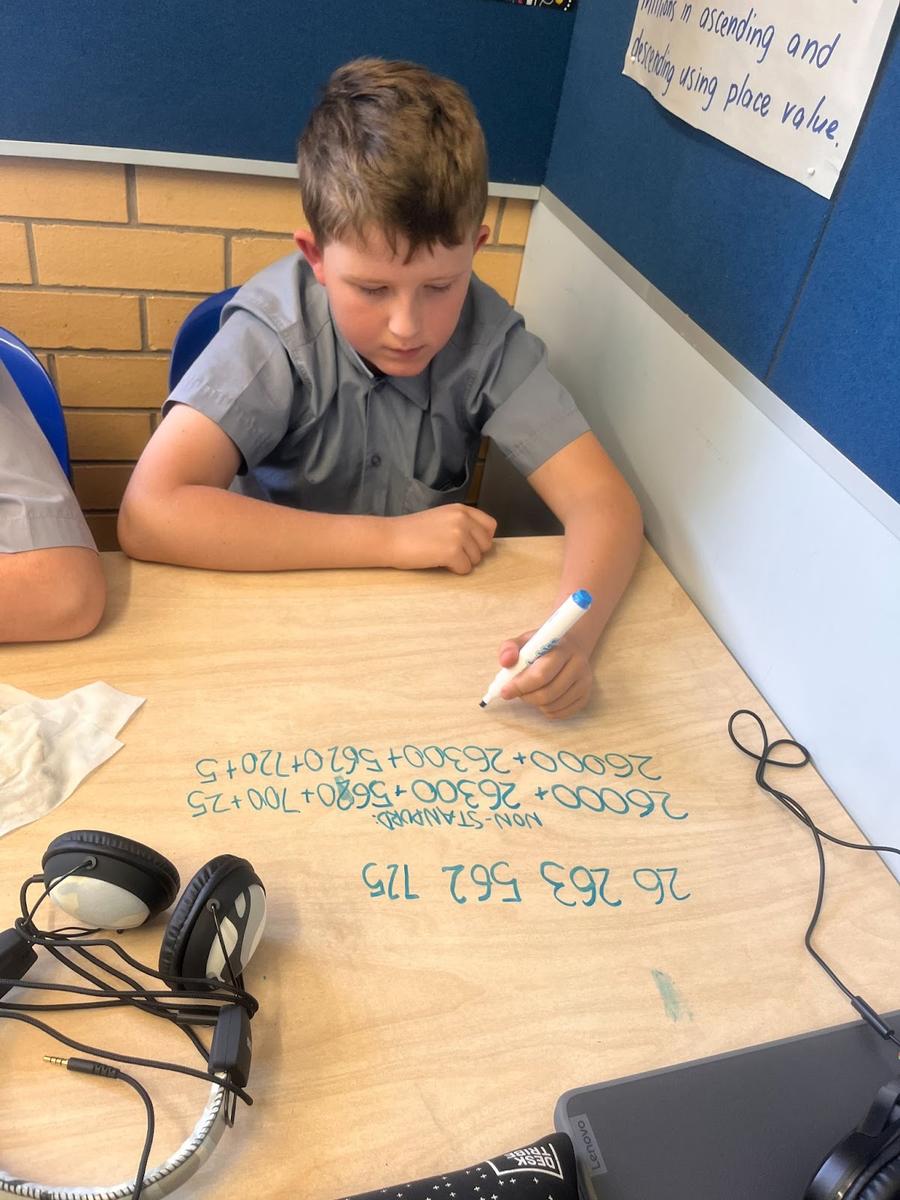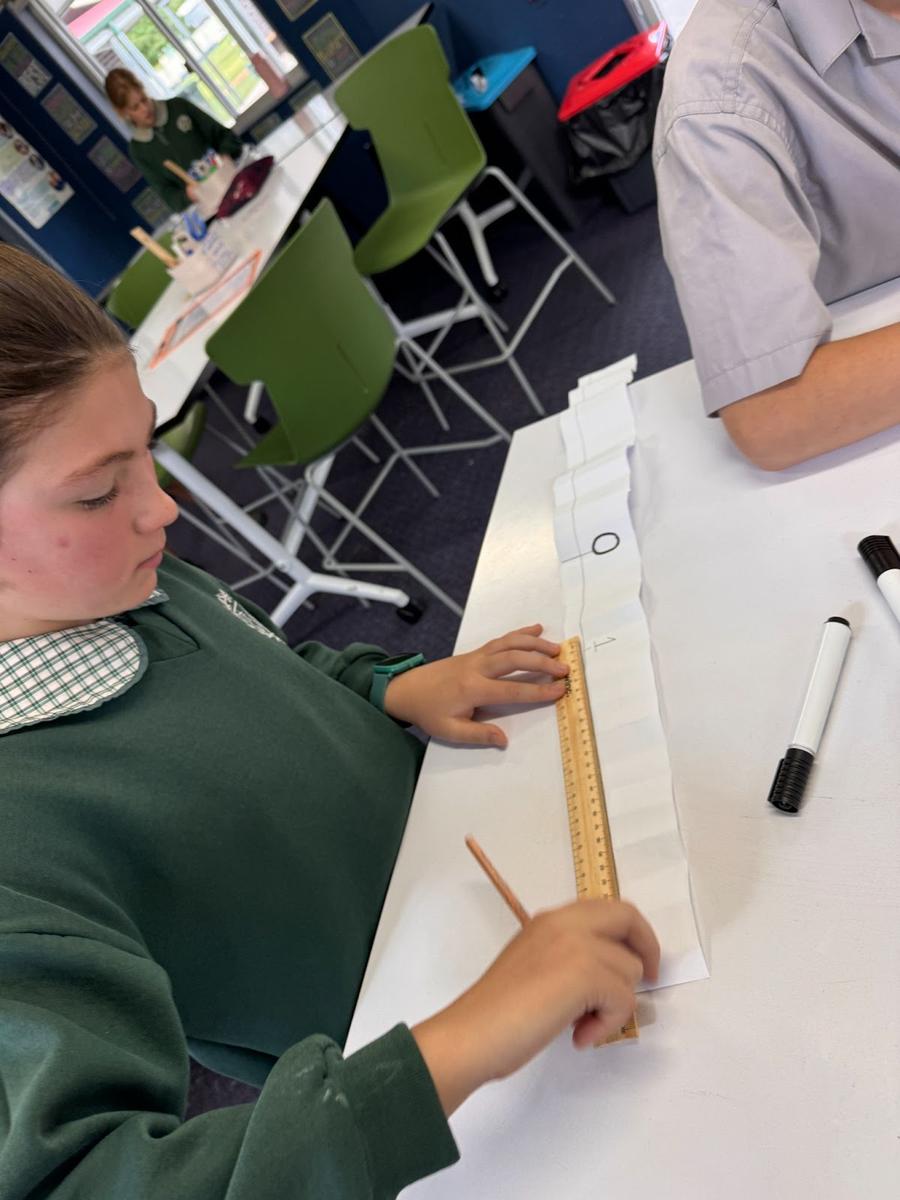The Learning Zone

Armidale Diocesan Mathematics Initiative (MaST)
Stage 3 students have been diving deep into the world of mathematics! They have explored 3D shapes, constructing their own skeletal models to understand their properties and structures.
In number work, they are mastering how to read large numbers in the millions, with some even challenging themselves by tackling billions! They are also sharpening their rounding skills, learning to round numbers to the nearest 10, 100, and 1,000. Developing a sense of the size of numbers with reference to tens and hundreds supports students in estimating answers. Rounding numbers to the nearest ten or hundred produces a way to test the reasonableness of a result. It’s exciting to see their confidence grow as they develop these important mathematical skills!
This week, Stage 3 began their unit of work on exploring additive relations. The strategies students use to carry out addition and subtraction develop from counting to using known number facts and properties. Some strategies are more efficient than others. Whether a strategy is appropriate depends on the task or question itself. To be able to select appropriate strategies to add and subtract, students need to be aware that the numbers in a problem influence which methods are easier for that particular problem.
Tips for parents
Encourage Mental Math:
Help your child develop mental math skills by practicing calculations in their head. For example, encourage them to break down problems into smaller, more manageable parts or use known facts to solve related problems.
Relate to Real-life Scenarios:
Connect math to everyday situations. Use real-life examples to show how addition and subtraction are used in daily activities like shopping, cooking, or dividing items among family members.
There are a range of misconceptions that students may have and it is important to discuss them in the real life context when they are identified.
- Child misapplies knowledge of whole numbers when reading decimals and ignores the decimal point. For example, student reads the number 45.7 as, “four fifty-seven” or “four hundred fifty-seven.”
- Child adds or subtracts without considering place value, or starting at the right as with whole numbers. For example, 4.15 + 0.1 = 34.16 or 12 – 0.1 = 11
- Child misunderstands the use of zero as a placeholder. For example, 1.5 is the same as 1.05
- Child thinks that decimals with more digits are smaller because tenths are bigger than hundredths and thousandths. For example, .845 is smaller than .5
Parent Information NAPLAN Year 3 and 5
Each year the National Assessment Program – Literacy and Numeracy (NAPLAN) is sat by students in Years 3, 5, 7 and 9.
Students will participate in tests for writing, reading, conventions of language (spelling, grammar and punctuation) and numeracy. NAPLAN 2025 will take place from Wednesday 12 March to Monday 24 March. NAPLAN is just one part of our school’s learning assessment program. The tests assess literacy and numeracy skills your child is already learning at school, so the best preparation is their everyday classroom learning.
Our school will also undertake activities to help students become familiar with the types of questions and tools available in the online tests.
The public demonstration site (https://www.nap.edu.au/online-assessment/publicdemonstration-site) is available for you to see the format of the online tests.
Further information about NAPLAN is available on the NESA website (https://www.nsw.gov.au/education-and-training/nesa/naplan) and the NAP website (https://www.nap.edu.au/naplan/for-parents-carers).
If you have any questions about NAPLAN, please contact Zoe Nugent or Libby Lockwood via the office.
